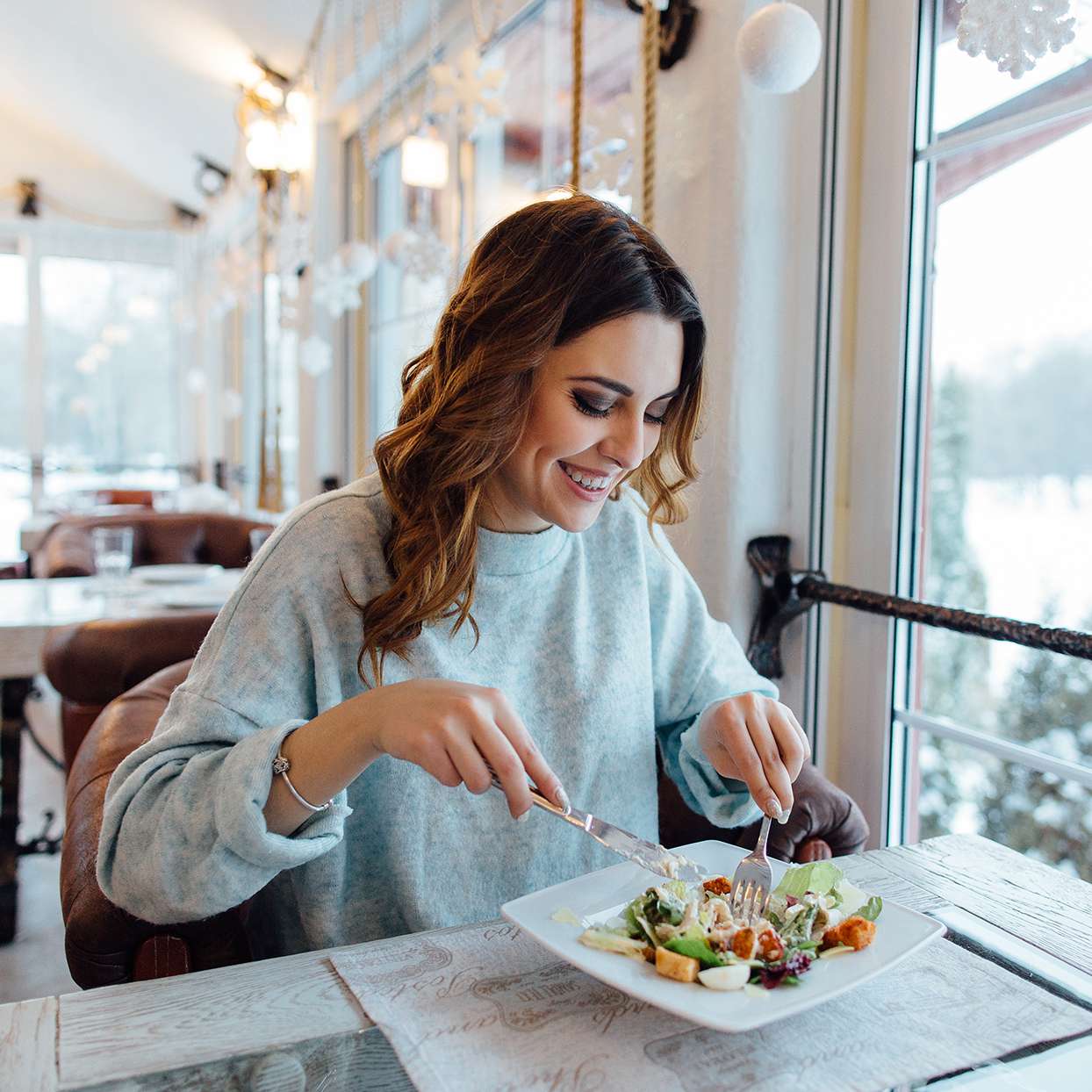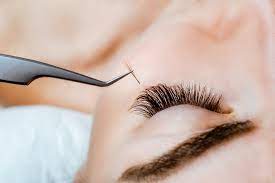
While you’ll likely have the same late-night cravings in your 40s as you did when you were in college, your nutritional needs will shift with each passing decade. But it’s hard to know which foods are a good fit for you without understanding how, exactly, your body is changing. (FYI: You should change your workout as you get older, too.)
Here, we compiled all of our expert-backed tips to make an age diet chart and meal plan that will help you establish a healthy lifestyle, whether you’re 25 or 45. (BTW, these anti-aging foods will make you stay healthy and look younger.)
Nutrition in Your 20s
You’re working your first real job, making new friends, dating, getting married, maybe even starting a family. Your life is a whirlwind, which means healthy eating is the first thing to go. To conquer your biggest nutritional dilemmas:
Make fast food healthy. Researchers at Brown University Medical School found that 20-somethings eat 25 percent more fast-food meals than they did in their teens. Grabbing dinner on the go means you may be missing out on crucial nutrients, says Bonnie Taub-Dix, R.D., a spokesperson for the American Dietetic Association. Slave over the stove? Nah. Choose healthy convenience foods rotisserie chicken, shrimp cocktail, steamed dumplings, salads and enjoy them with speedy additions from your kitchen€” like whole wheat pasta, instant brown rice, frozen veggies. (If you’re looking for a quick homemade meal, try meal prepping.)
Drink to your health. Margaritas, mojitos, and cosmos can add up faster than you can say cheers. Enter light beer (110 calories in a 12-ounce bottle). It’s filling, so you’re less likely to want a second, and it takes a good long time to drink. (Also consider the health benefits of giving up alcohol—or just drinking less.)
Key Nutrients You Need Now
- Protein: Protein helps keep you full and provides the building blocks so you can make and keep muscle. “Recent studies suggest that, at a minimum, we need 60 to 70 grams of protein a day,” says Leslie Bonci, M.P.H., R.D., director of sports medicine at the University of Pittsburgh Medical Center. Get your quota by eating skinless white-meat poultry, lean steak, fish, eggs, beans, tofu, and low-fat dairy. (Here’s more on how much protein you really need per day.)
- Potassium: In order for your muscles and heart to function properly, you need to consume a hefty dose of potassium. But most women in their 20s get less than half the recommended amount, according to the USDA. Munching on two cups of fruit (like an apple, a banana, and plain yogurt with fresh strawberries) and two and a half cups of veggies daily (like a garden salad and a side of broccoli) will help you get all the potassium you need.
- Omega-3 fatty acids: These polyunsaturated fatty acids may boost the level of serotonin, a feel-good chemical in your brain that research shows may be linked to depression when transmitted in low levels. Since women are twice as likely as men to be diagnosed with depression, start incorporating salmon and tuna into your diet, which are rich in omega-3s. You can also get your fill from walnuts, ground flaxseed, and canola oil.
The Age Diet Chart for Your 20s
Snack Smart
Load up your desk drawer or office fridge with these healthy treats.
- Greek yogurt (6 ounces) with 1 tablespoon chopped walnuts
- Reduced-fat string cheese and 10 whole-grain crackers
- Granola bar and a nonfat latte
- 4 ounces nonfat cottage cheese and a mini box of raisins
- 6 dried apricots and 2 tablespoons sunflower seeds
- Energy bar and 12 almonds
- 20 mini carrots dipped in 1/4 cup hummus
- Single-serve vanilla soy milk and 1/2 cup whole-grain cereal
Your 20-Something Meal Plan
- Breakfast: 24-ounce Jamba Juice Protein Berry Pizzazz Smoothie. It’s packed with protein to keep you satisfied. (Or whip up one of these healthy smoothies at home.)
- Morning Snack: 1 packet instant oatmeal sprinkled with 1 tablespoon ground flaxseed
- Lunch: Asian grilled-chicken salad with mixed greens, edamame, mandarin oranges, tomatoes, and low-fat vinaigrette
- Afternoon Snack: Medium orange and 1 tablespoon chopped walnuts
- Dinner: 7 pieces sushi and 1 cup edamame
- Evening Treat: Gingerbread ice cream sandwich (fill 2 gingersnaps with one-half cup light vanilla ice cream)
Nutrition info for the day: 1,941 calories, 100g protein, 40g fat (5g sat), 293g carbs, 34g fiber
Nutrition in Your 30s
Remember when you had time at least occasionally to indulge in a manicure? Now, not so much. You’re too swamped juggling the demands of more work and home responsibility and most likely eating on the run. Here’s what you can do to be happy and healthy:
Put your health first. “In your 30s you start to see signs of an unhealthy lifestyle, such as diabetes or hypertension,” says James O. Hill, PhD, director of the Center for Human Nutrition at the University of Colorado. Dropping 10 percent of your weight can slash your risk of these diseases.
Key Nutrients You Need Now
- Folate: It’s critical for supporting a healthy pregnancy, preventing neural-tube defects and helping your body make new cells. Folate may also help reduce the risk of heart disease. Eat foods such as chickpeas, asparagus, spinach, broccoli, avocados, orange juice, and fortified whole grains to help meet your daily 400-microgram requirement.
- Phytonutrients: “These compounds contain antioxidants, which slow the aging process, ward off heart disease, and prevent changes in DNA, potentially preventing the development of cancer,” says Bonci. While phytonutrients come from plants, dark chocolate, red wine, and coffee are highest in them.
- Iron: When you don’t get enough iron, you might feel physically drained and mentally exhausted. Researchers at Penn State University found that young women who were deficient in the mineral took longer and performed worse on cognitive tasks than those who had normal levels of iron. Get your daily dose of 18 milligrams from foods such as clams, lean beef, fortified breakfast cereal, soybeans, pumpkin seeds, and skinless poultry.
The Age Diet Chart for Your 30s
5 Ingredients, 5 Minutes, 5 Lunches
You do have time for lunch! Here, healthy meals for about 400 calories.
- Mediterranean Tuna Salad: Toss 3 ounces light tuna with 1 chopped tomato, 1/2 diced cucumber, 1 cup white beans, and 2 tablespoons Italian dressing.
- Almond Butter and Pear Sandwich: Spread 2 slices whole wheat bread with 1 tablespoon almond butter. Top with 1/2 small sliced pear and 1 teaspoon honey. Enjoy with a glass of nonfat milk.
- Tex-Mex Turkey Wrap: In a medium whole wheat tortilla, fold 3 ounces sliced turkey breast, 1/4 sliced avocado, 1/4 cup low-fat shredded cheddar cheese, and 2 tablespoons salsa.
- Ham and Brie Sandwich: Spread 1 tablespoon honey mustard on 2 pieces pumpernickel bread. Top with 2 ounces ham, 1 ounce Brie, lettuce, and tomato.
- Smoked Salmon Bagel: Spread 1 tablespoon whipped cream cheese on a whole wheat bagel. Top with 2 ounces smoked salmon, sliced red onion, and 2 teaspoons capers.
Your 30-Something Healthy Meal Plan
- Breakfast: Whole wheat English muffin topped with 2 tablespoons natural peanut butter and 1/2 small sliced banana, and 1 cup calcium and vitamin D-fortified orange juice
- Morning Snack: 1/2 cup Cheerios with 1/2 cup 1-percent or nonfat milk
- Lunch: Curried shrimp salad (boil 10 shrimp and mix with 1 tablespoon mayonnaise and 1 teaspoon curry powder) in a whole wheat pita, and 1 cup watermelon chunks
- Afternoon Snack: 6-ounce container light yogurt with 1/2 cup raspberries
- Dinner: Chickpea salad (toss 1/2 cup canned, drained chickpeas with 1 tablespoon Italian dressing), 4 ounces lean flank steak, grilled or broiled, topped with 2 tablespoons teriyaki sauce, 2 cups baby spinach sautéed in 1 teaspoon olive oil, and 1 medium baked sweet potato
- Evening Treat: 1 ounce dark chocolate
Nutrition info for the day: 1,868 calories, 94g protein, 64g fat (17g sat), 243g carbs, 34g fiber
Nutrition in Your 40s
“This is when women start to find some time for themselves again,” says Hill. “They’re really anxious to improve their health and fitness.” Here’s what you can do to boost your health:
Understand that your body is changing—and that’s okay. As you age, your body begins to go through estrogen withdrawal, which may change the areas your body puts on weight. “In her childbearing years, a woman puts on weight in her butt, hips, and thighs to fuel breastfeeding,” says FITNESS advisory board member Pamela Peeke, MD, author of Fit to Live. “The fat cells in those areas have estrogen receptors. As you go through estrogen withdrawal, those receptors aren’t being activated anymore.” You might start noticing weight gain in your stomach area, so if you’re looking to strengthen your core, try your hand at these workouts. (On the flip side, you could also experience estrogen dominance.)
Cut just 100 calories a day. “For every decade after 40, there’s roughly a 1-percent decrease in calorie requirements,” says Bonci. “That’s the equivalent of one extra cookie.”
Key Nutrients You Need Now
- Calcium: As you approach menopause, bone-building estrogen starts to decline and calcium becomes more important. Ironically, you absorb less calcium from the food you eat because your stomach doesn’t make as much of the acid necessary for absorption. Aim for 1,000 milligrams a day from low-fat dairy, supplements, or a combination. (Related: The First Woman’s Guide to Getting Enough Calcium)
- Vitamin D: This nutrient helps your body absorb calcium, keeps your immune system strong, protects against breast and colon cancers, and even prevents hearing loss. But by the time you reach your 40s, your vitamin D levels quickly start to plummet. “There’s no way to get enough vitamin D from your diet because very few foods contain it,” says Bonci. Your best bet: a daily supplement of 600 to 1,000 international units.
- Fiber: Fiber not only makes you feel fuller longer, but it also “helps decrease cholesterol and your risk for colon cancer,” says Dr. Peeke. Try to eat a mix of soluble (from fruits, vegetables, barley, and oats), and insoluble (from whole wheat bread and bran) fiber daily.
The Age Diet Chart for Your 40s
Your 40-Something Healthy Meal Plan
- Breakfast: 1 cup high-fiber cereal (such as bran flakes) with 1 cup 1-percent milk and 1 cup blueberries, and 1 cup green tea
- Morning Snack: 1 medium apple with 1 tablespoon soy-nut butter
- Lunch: Veggie burger on a whole wheat bun with 2 slices low-fat cheddar cheese (1 ounce each), and a 6-ounce can low-sodium vegetable juice
- Afternoon Snack: 2 tablespoons hummus with 6 whole wheat crackers
- Dinner: 3 ounces broiled salmon over 1 cup barley pilaf, and 6 asparagus spears sautéed in 1 teaspoon olive oil
- Evening Treat: 6-ounce container light vanilla yogurt topped with 1 tablespoon mini chocolate chips
Nutrition info for the day: 1,656 calories, 92g protein, 48g fat (13g sat), 228g carbs, 39g fiber
[“source=shape”]












